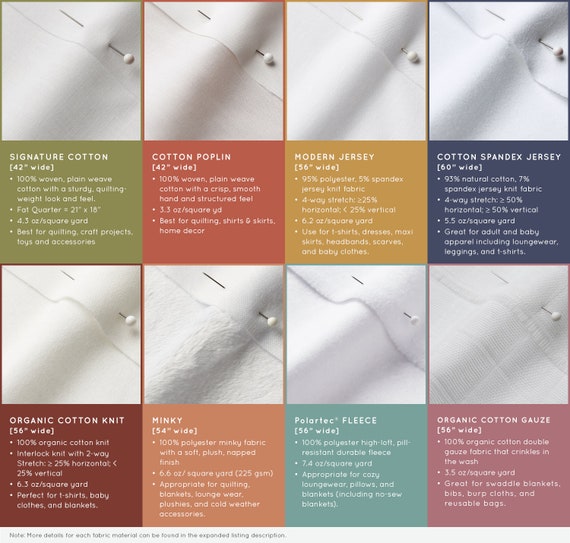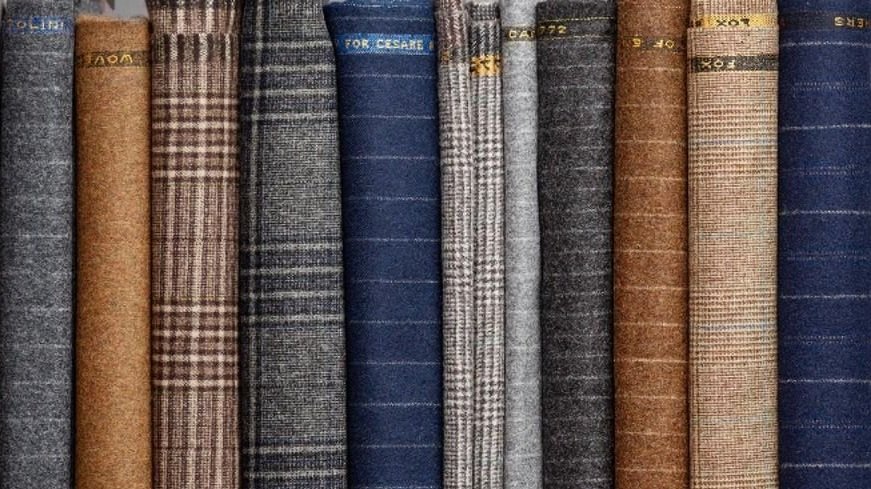Facts About All 4 Way Stretch Fabrics Revealed
Facts About All 4 Way Stretch Fabrics Revealed
Blog Article
All 4 Way Stretch Fabrics Things To Know Before You Get This
Table of ContentsAll 4 Way Stretch Fabrics Can Be Fun For AnyoneAll 4 Way Stretch Fabrics Can Be Fun For EveryoneThe 20-Second Trick For All 4 Way Stretch FabricsUnknown Facts About All 4 Way Stretch FabricsThe 15-Second Trick For All 4 Way Stretch FabricsThe Main Principles Of All 4 Way Stretch Fabrics 9 Easy Facts About All 4 Way Stretch Fabrics Shown
As I also desire UV protection from my garments when I go out, I would choose a densely woven cotton fabric. One more factor to consider when purchasing the textile is the way it will after washing.A risk-free wager would certainly be to purchase the very least 10% extra fabric. If you can purchase preshrunk textile, this is the finest. Preshrunk textile will certainly have tags that will state" and so on. If you are seeking a fabric that will certainly not extend or lose shape, you can try to find the "anti-sag" tag.

If you are matching the color, like selecting the cellular lining for the main fabric or selecting material to include as trim, this is specifically important. The textile display rooms will usually have a light well where you can see the fabric in sunshine (or a window with good light from outdoors).
The Ultimate Guide To All 4 Way Stretch Fabrics

A lot of fabrics are regarding 44 broad. When you most likely to get textile, quote just how much you desire initially and then go to the shop. Look into this article to know the solution to this often listened to question "Just how much fabric do I need". With a fat quarter, you will obtain an 18 wide by 22 long.
Some wonderful deals can be had this way. In dressmaking, we buy textile by the yard/meter.
The Basic Principles Of All 4 Way Stretch Fabrics
In a quarter of a backyard, you obtain a 9 by 44 strip of fabric, which is regarding 22 cm in length. It is always far better to buy wider cloth. According to the width of materials, they may be called single-width and double-width. Solitary size is generally approximately 49 inches in width and double width up to 60.
Select textiles that are not too hard or rigid, or you wouldn't be comfy in them. Linen, Denim, flannel, For colder environments, select woollen (100% as well as woollen blends) woollen tweeds, woollen crepe; it primarily depends on what pants you are chatting about Tailored trousers, Unstructured Pant, Combined, Denim.
All cotton fabrics are excellent for youngsters. Knit materials are also great for youngsters you can go for wool knits.
All 4 Way Stretch Fabrics Things To Know Before You Buy
Cotton lawn towel in appealing prints is fantastic. Silk jacket is a wonderful material for stitching skirts, as is Ponte Roma knit textile.
Drapey rayons, soft wool, lycra blends, and stretch velours are all suitable for sewing skirts. Woollen (Wool crepe has a great drape and provides enough framework for jackets; woollen tweeds are terrific as well), Bed linen & Flannel. Raw silk, satin, taffeta, velour, Shoelace, silk chiffon, and Fabric are all terrific for making outfits.
You can get medium-weight materials with some spandex/elastane added for a suitable bodycon-type gown. For drapey gowns, you can choose lightweight fabrics. Crepe, challis, and charmeuse are all drapey materials suited for this design.
Lightweight cotton material, Cambric, Chintz, Twill, Faille, Seersucker, Poplin, light-weight woven broadcloth, batiste, linen, eyelet are good for making t shirts and blouses. Smooth satin fabric is good for making ventilated tops. When getting patterned material (many of the formed fabric comes with a width of 45 or 54 inches), there will certainly be pattern repeat in these textiles, and this should be taken into consideration when cutting textile as well as buying them i.e., if you want to match the patterns at the seams.
The Only Guide to All 4 Way Stretch Fabrics
The concepts will certainly be dispersed in a planned fashion on the material. You might discover sometimes If the print is not placed on the textile appropriately, it can not be matched or lined up when built without distorting the material and the hang of the garment.


The textile weight is reliant on many factors like the weave, fiber kind, etc and is typically represented by GSM. GSM can vary from 60 -700; 700 being the GSM of extremely top quality woolen textile.
One point you have to maintain in mind is that greater material weight does not denote higher material top quality. You can not pick high textile weight fabric jeans for a lightweight floating shawl.
Have a look at the checklist of the 70+ various fabric surfaces and treatments. Essentially, the most vital criteria to try to find in the fabric you buy are as complies with. The variety of strings per inch of material (yarns-per-inch). Higher the thread count higher the variety of threads woven per inch, and the greater the high quality.
All 4 Way Stretch Fabrics for Beginners
This is very vital in any kind of fabric. In top notch material, this equilibrium (either in numbers or in dimension) will always be maintained. Processes utilized on fabric to boost look and performance. The fibers that are woven to make the textile will certainly either be as a solitary strand or will be formed by incorporating 2 yarns (turned).
A two-ply yarn is superior to a single-ply yarn.
If you are preparing to begin a new embroidery project, choosing a textile will be the most important step as soon as you determine what you desire to make. After you've gone to all the trouble and expenditure of buying the stitching maker you love, a pattern you love, and a fabric you love, you want the completed item to be a success? One way to accomplish that is to start by making certain your fabric is absolutely right for the task.
How All 4 Way Stretch Fabrics can Save You Time, Stress, and Money.
As an example, if you're making a quilt, you'll immediately wish to utilize quilter's weight cotton for best outcomes. However what happens if you want to make a thing of clothing? Exactly how do you recognize which fabric will provide you the very best outcome? Choosing a textile merely since you like the print or design on it isn't necessarily the best technique.
You obtain the image. In order to stay clear of doing an entire project for practically nothing, we've put together some pointers to aid you decide which textile is best for your task. Allow's claim you currently have a task in mind; just how do you find the best material for it? One means is to look at comparable items in storesor ones you already have.
Think of the characteristics you desire the completed item to have. Do you want a strong shade or a print? If you are making a non-wearable product such as a pillow cover or potholder, use a strong fabric such as canvas.
There is a lot info out there regarding materials, their characteristics, and their uses, see here now it could obtain to be overwhelming! Do not try to take it in all at as soon as; just begin with the job at hand. Find out all you can regarding the material you utilize for this set job.
Report this page